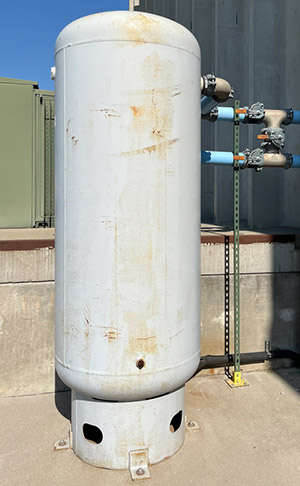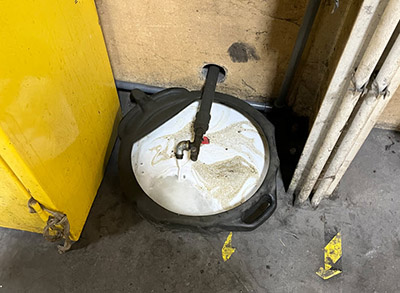
During plant inspections, it is often noticed that compressed air receiver tanks are installed outdoors. This is done for a reason — and is a good idea, in many cases, because it benefits the operation of air drying and filtering equipment and produces better quality compressed air when hot summer days cause worst-case conditions.
Here are some tips in installing outdoor air receivers:
- The outdoor receivers are normally “wet receivers” meaning they are installed before the air dryer. If the receiver is in a cooler location than inside the compressor room the flow of compressed air will cool slightly, and water will condense out of the airstream. If there is any free water within the flow, then this will be deposited on the bottom of the receiver also.
- Every 20° F reduction in temperature will drop about half the water vapor from the saturated airstream — this greatly reduces the moisture loading on the air dryer and helps maintain good air quality.
- Realize the tank must be cooler than the compressor room; a tank sitting in direct sunlight on the South side of the building may not achieve adequate cooling unless protected with shrouding or roofing.
- Uncoated wet tanks will corrode inside, especially if the condensate is acid due to industrial gases that the compressors may ingest. Be sure to inspect the tank regularly and keep the condensate drains operating correctly.
- In climates where winter freezing may be common, the receiver condensate drain must be protected from ice blockage by good designed and heat taping.
-

Fig. 2. On a hot summer day, the outdoor wet receiver captures lots of water (and oil). The condensate drain needs to be working correctly or excess moisture will build up in summer. In winter freeze protection must be installed to ensure the water and lubricant can drain. Ensure the pipes to and from the tank are protected and insulated if freezing temperatures are going to be a problem.
- Some Northern climates allow ambient temperatures to fall vary low, realize that receiver tanks have a minimum temperature rating, below which the metal walls become too brittle to be safe. Always ensure you keep the tank within rating.
Filed Under: Components Oil Coolers, Compressed Air Technologies, Pneumatic Tips